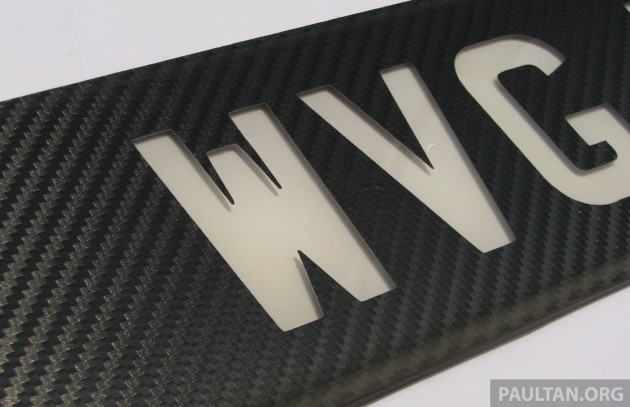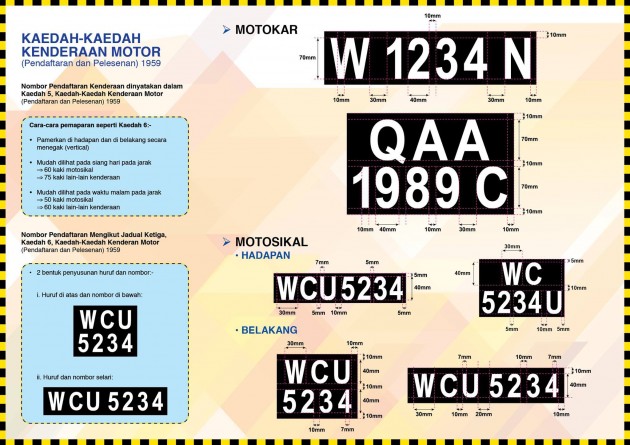Customised number plate styles and fonts have long been a thorn in the side of law enforcement agencies in the country for a long time – and apparently the Road Transport Department (JPJ) is finally doing something about it, according to The Sun.
The English language daily quotes deputy transport minister Datuk Aziz Kaprawi, saying that JPJ will implement a centralised production scheme for new standardised licence plates in the second half of this year, using metal plates with stamping. These plates are similar in style to the ones used in Singapore and Thailand.
The new number plate scheme will be launched after the introduction of national plates as part of major programmes by agencies under the transport ministry this year. “For a start, we will make the installation of the new type of number plates to be mandatory for new vehicles. Later, we will expand it gradually for existing vehicles in the next five years,” said Aziz.
He added that authorised agents in each district will be appointed gradually to ensure that number plates are produced in accordance to JPJ specification, in order to more effectively replace the licence plates on an estimated 18 million active registered vehicles.
These vendors, Aziz stressed, will be required to use the JPJ’s MySikap online registration system to keep production in sync with the agency’s records, to keep production under control, maintain the JPJ’s specification and prevent certain parties from changing plates without valid reason.
New buyers will get the new plates at no extra cost, and the JPJ is reportedly presenting a paper to the cabinet next month, requesting for government funding to cover the replacement cost on existing cars.
Aziz claims that the move is done in the interest in public security, as well as road safety – witnesses of the fatal incident on the DUKE Highway last May were unable to identify the registration numbers of at least three of the six Perodua Myvis allegedly street racing, as they were fitted with custom plates.
Custom number plates have also caused problems with the Automated Enforcement System (AES) – so far, there have been 87,000 cases of errant motorists who have slipped past the cameras’ detection, as their registration numbers were barely visible.
The standardised number plate styles would presumably also maximise the effectiveness of the new Automated Number Plate Recognition (ANPR) system, which helps the police identify and nab motorists with outstanding summonses.
Looking to sell your car? Sell it with Carro.













AI-generated Summary ✨
Comments generally agree that standardizing vehicle license plates, especially returning to durable metal plates, is a positive move for safety, enforcement, and reducing forgery. Many express frustration about previous delays and poor enforcement of regulations against non-standard or custom plates, which undermine efforts. Some emphasize the importance of using high-quality, visible fonts and materials to prevent theft, fading, and illegibility. There is concern about potential cronyism and profiteering, with remarks about existing vendors linked to certain individuals. A few mention the need for better enforcement, transparency in contracting, and more practical solutions like embedded RFID chips. Overall, comments support the initiative as a necessary modern update, though skepticism remains about implementation and corruption issues.